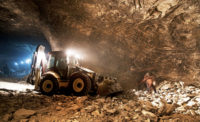A video produced by the Electric Power Research Institute (EPRI) provides a fascinating look at arc flash hazards and how they are tested and assessed.
EPRI Distribution Research Arc Flash includes the real-life case of the Alabama Power Company, which was required to do an assessment.
Filling in the gaps
“We realized that we needed some help to get this done,” said a spokesman. “We had a short time to do it in.”
The company asked EPRI and several other utitilities to take a look at their tools and do some testing to determine whether or not they had the proper tools and if not, to tell them what they needed.
Tom Short, Arc Flash Project Manager for EPRI, looked at available testing. ”And then we just looked to try to fill in the gaps for other types of utility work scenarios.”
Take the case of a worker inadvertently connects from phase-to-phase or ground to phase accidently.
The arc "wants to get big pretty fast"
“We want to know: does the arc stay small. Does it swing away?”
Short and his colleagues found out quickly that the arc “wants to get big pretty fast. That lead will drop away and the arc can really make a pretty long arc.”
High-speed cameras were used to see where the arc goes and where the blast goes relative to where the worker might be in various scenarios. “The current flow through the arc creates a high magnetic field and that makes the arc dance around, that’s what makes the arc go flying down the line if it goes phase to phase,” said Short.
The video has slow motion footage and infrared footage that helps illuminate what happens in various scenarios.
One conclusion: Conductor covers, which are supposed to increase worker safety by preventing a current from going to a multi-phase fault, more dangerous fault scenario, do work. Short found that coverings do provide good protection from a fault that starts somewhere else going to a multi-phase fault.



